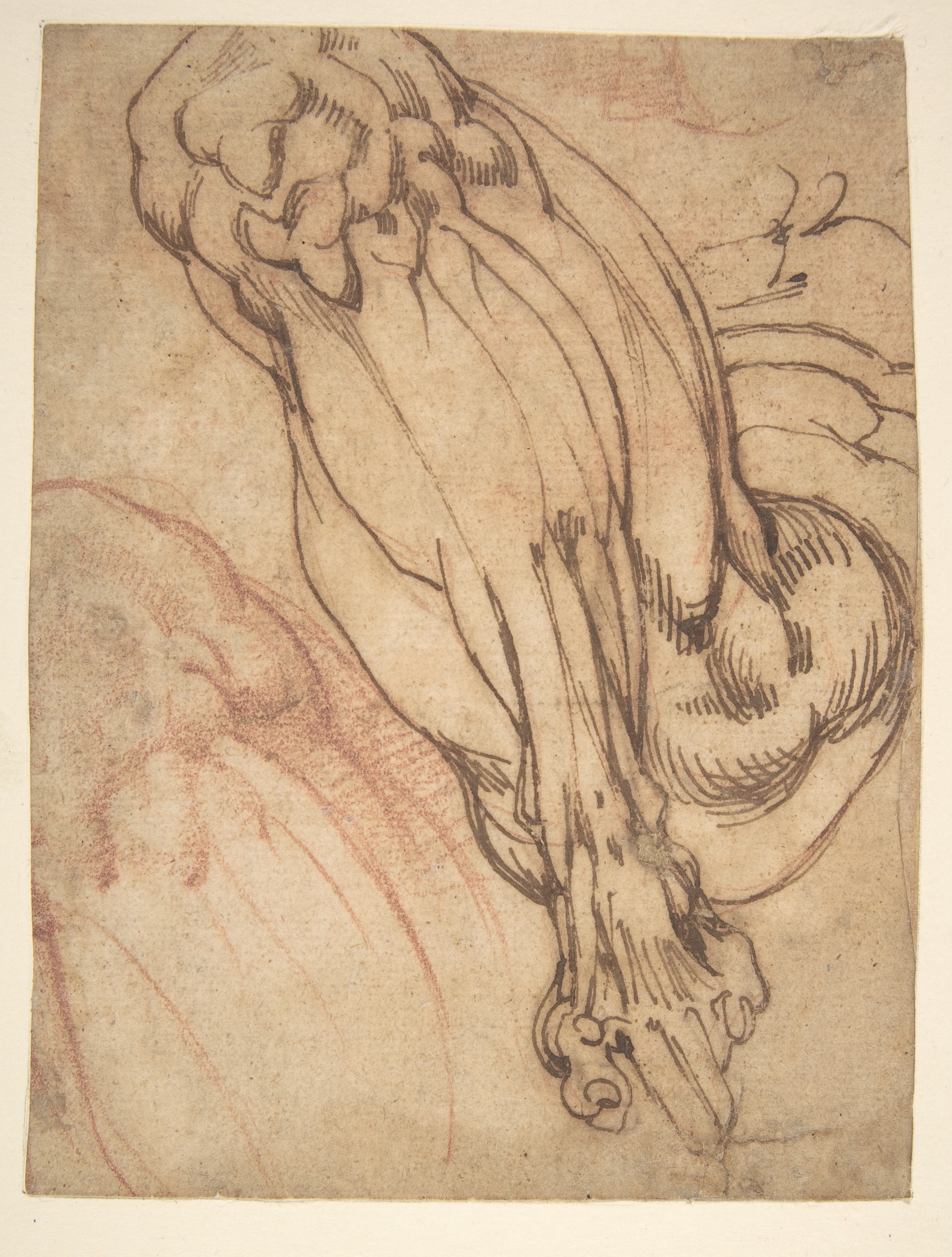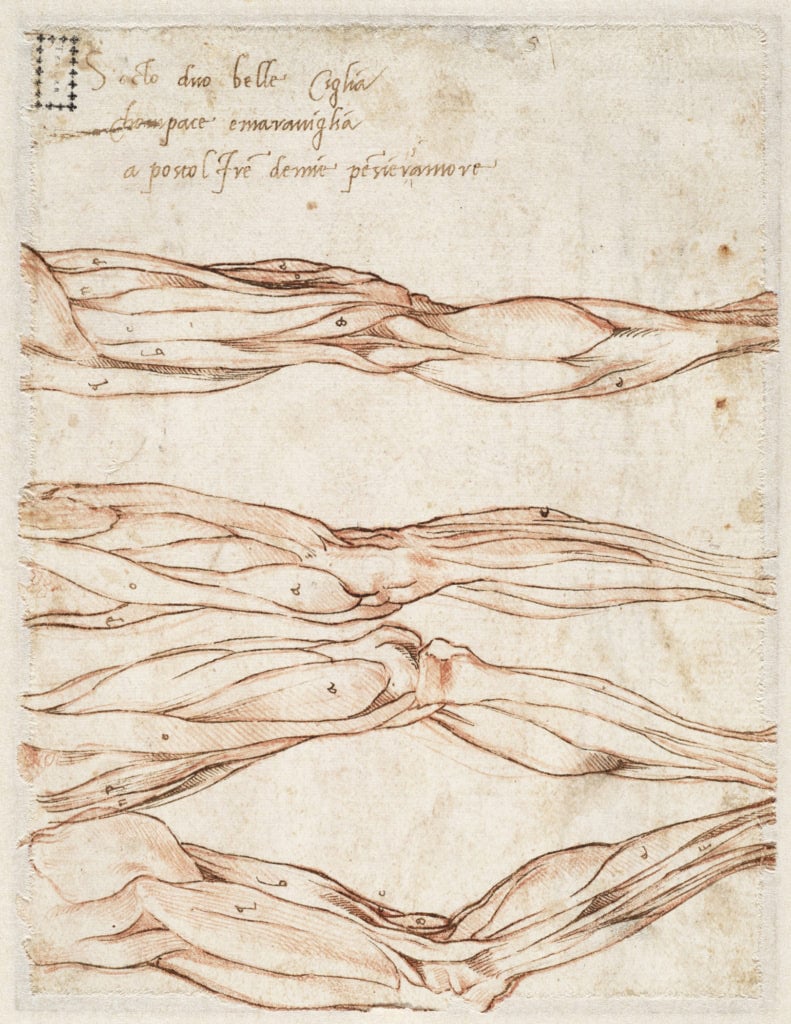Michelangelo Anatomy Drawings
Michelangelo Anatomy Drawings - The scenes from genesis on the ceiling of the sistine chapel in rome, and the last judgment on its altar wall. His surviving anatomical drawings, like the ones exhibited here, attest to his thorough understanding of certain muscles, especially those of the limbs. Web see 46 extraordinary michelangelo drawings that were missing from the met’s blockbuster show—but are now coming to cleveland the works come from the collection of queen christina of sweden and are borrowed from the teylers museum in the netherlands. Web types of drawings created by michelangelo. Web observers have claimed to see numerous specific anatomical images in michelangelo’s sistine chapel frescoes, including the brain, kidney (eknoyan, 2000 ), brainstem (suk & tamargo, 2010 ), and more (tatem, 2013 ).
Feedloader (clickability) the renaissance may be best known for its artworks: Tourists flock to rome and florence to stand before them. Web although still an inexperienced artist, michelangelo’s drawing surpasses ghirlandaio’s. Michelangelo often represents the bodies incomplete, without the head or a leg, evidencing what he is interested in seeing: The action of the muscles that tend, that twist them. By the age of 18, he began to perform his own dissections. Relatively little is known of this interaction between anatomy and art in michelangelo's life and work.
anatomy study by Michelangelo .. Figure drawing, Sketches
The action of the muscles that tend, that twist them. Web see 46 extraordinary michelangelo drawings that were missing from the met’s blockbuster show—but are now coming to cleveland the works come from the collection of queen christina of sweden and are borrowed from the teylers museum in the netherlands. Combined with old master drawings.
michelangelo anatomy drawings
Michelangelo’s thorough comprehension of human anatomy was perhaps his most significant technical accomplishment. Web michelangelo’s drawings vasari tells us that, prior to his death at rome in 1564 michelangelo had burned “a large number of his own drawings, sketches and cartoons so that no one should see the labors he endured and the ways he.
The Classical Pulse Michelangelo Anatomy Studies
Web types of drawings created by michelangelo. Web michelangelo’s drawings vasari tells us that, prior to his death at rome in 1564 michelangelo had burned “a large number of his own drawings, sketches and cartoons so that no one should see the labors he endured and the ways he tested his genius, and lest he.
Микелеанджело. Штудии рук Life drawing, Anatomy art, Michelangelo
Relatively little is known of this interaction between anatomy and art in michelangelo's life and work. Michelangelo often represents the bodies incomplete, without the head or a leg, evidencing what he is interested in seeing: His relationship withously analyzed, criticized, reproduced and parodied, its colombo likely began when colombo diagnosed and treatedimageshavefoundaplaceinpopularculturethroughout him for nephrolithiasis.
School of Michelangelo Buonarroti Anatomical Studies of a Leg (recto
His surviving anatomical drawings, like the ones exhibited here, attest to his thorough understanding of certain muscles, especially those of the limbs. Web michelangelo's most seminal pieces: Or he concentrates on a detail of the body, a leg that flexes, an arm. Web the subject most frequented is the male body. Web see 46 extraordinary.
See 46 Extraordinary Michelangelo Drawings That Were Missing From the
Web observers have claimed to see numerous specific anatomical images in michelangelo’s sistine chapel frescoes, including the brain, kidney (eknoyan, 2000 ), brainstem (suk & tamargo, 2010 ), and more (tatem, 2013 ). By the age of 18, he began to perform his own dissections. Michelangelo’s figure has a more convincing depiction of volume and.
anatomy study by Michelangelo .. . Figure drawing, Michelangelo
In the vast, almost overwhelming, scholarship on michelangelo, art scholars ponder on his origins as painter, sculptor, architect, and even poet, but other than paying tribute to his anatomical knowledge, they have little to say about his origins as an anatomist. Anatomy as architecture consists of drawings, archival pages, and engravings on loan from the.
Michelangelo sketch of an arm Arm Drawing, Master Drawing, Figure
Michelangelo reportedly first dissected a cadaver in florence around 1495, after he had been commissioned to sculpt a crucifix of wood for the church of santo. His surviving anatomical drawings, like the ones exhibited here, attest to his thorough understanding of certain muscles, especially those of the limbs. Feedloader (clickability) the renaissance may be best.
Michelangelo Anatomia Anatomy drawing, Anatomy sketches, Life drawing
He dissected numerous cadavers and developed a profound understanding of human anatomy. Web michelangelo and anatomy. In the creation of adam, “eve’s knee” is in the position of the pineal gland (binkley, 1995 ). Michelangelo often represents the bodies incomplete, without the head or a leg, evidencing what he is interested in seeing: Web the.
anatomy by Michelangelo.... Arm study, Michelangelo, Masters drawings
Web the investigation of anatomy and proportion was crucial to an artist's understanding of the human body and one of the major challenges for renaissance artists. His surviving anatomical drawings, like the ones exhibited here, attest to his thorough understanding of certain muscles, especially those of the limbs. His design of the laurentian library pioneered.
Michelangelo Anatomy Drawings Web michelangelo’s interest in anatomy did not extend to the organs but focused on the muscles and bones. Tourists flock to rome and florence to stand before them. His design of the laurentian library pioneered mannerist architecture. Michelangelo’s thorough comprehension of human anatomy was perhaps his most significant technical accomplishment. Sarah cascone, september 23, 2019
Web Although Still An Inexperienced Artist, Michelangelo’s Drawing Surpasses Ghirlandaio’s.
Web michelangelo's most seminal pieces: Michelangelo’s sistine chapel and “david,” and. In this preparatory sketch of a naked model made from life, del sarto accurately rendered the muscles and position of the limbs. Web the anatomy of renaissance art.
His Relationship Withously Analyzed, Criticized, Reproduced And Parodied, Its Colombo Likely Began When Colombo Diagnosed And Treatedimageshavefoundaplaceinpopularculturethroughout Him For Nephrolithiasis In 1549.
Or he concentrates on a detail of the body, a leg that flexes, an arm. Web michelangelo analyzed the anatomical framework of human beings in his drawings, usually with unparalleled detail and accuracy for the time. Web types of drawings created by michelangelo. The scenes from genesis on the ceiling of the sistine chapel in rome, and the last judgment on its altar wall.
Web Michelangelo’s Interest In Anatomy Did Not Extend To The Organs But Focused On The Muscles And Bones.
The action of the muscles that tend, that twist them. He dissected numerous cadavers and developed a profound understanding of human anatomy. Relatively little is known of this interaction between anatomy and art in michelangelo's life and work. In the vast, almost overwhelming, scholarship on michelangelo, art scholars ponder on his origins as painter, sculptor, architect, and even poet, but other than paying tribute to his anatomical knowledge, they have little to say about his origins as an anatomist.
Web The Investigation Of Anatomy And Proportion Was Crucial To An Artist's Understanding Of The Human Body And One Of The Major Challenges For Renaissance Artists.
His surviving anatomical drawings, like the ones exhibited here, attest to his thorough understanding of certain muscles, especially those of the limbs. Web see 46 extraordinary michelangelo drawings that were missing from the met’s blockbuster show—but are now coming to cleveland the works come from the collection of queen christina of sweden and are borrowed from the teylers museum in the netherlands. Michelangelo reportedly first dissected a cadaver in florence around 1495, after he had been commissioned to sculpt a crucifix of wood for the church of santo. Michelangelo often represents the bodies incomplete, without the head or a leg, evidencing what he is interested in seeing:









